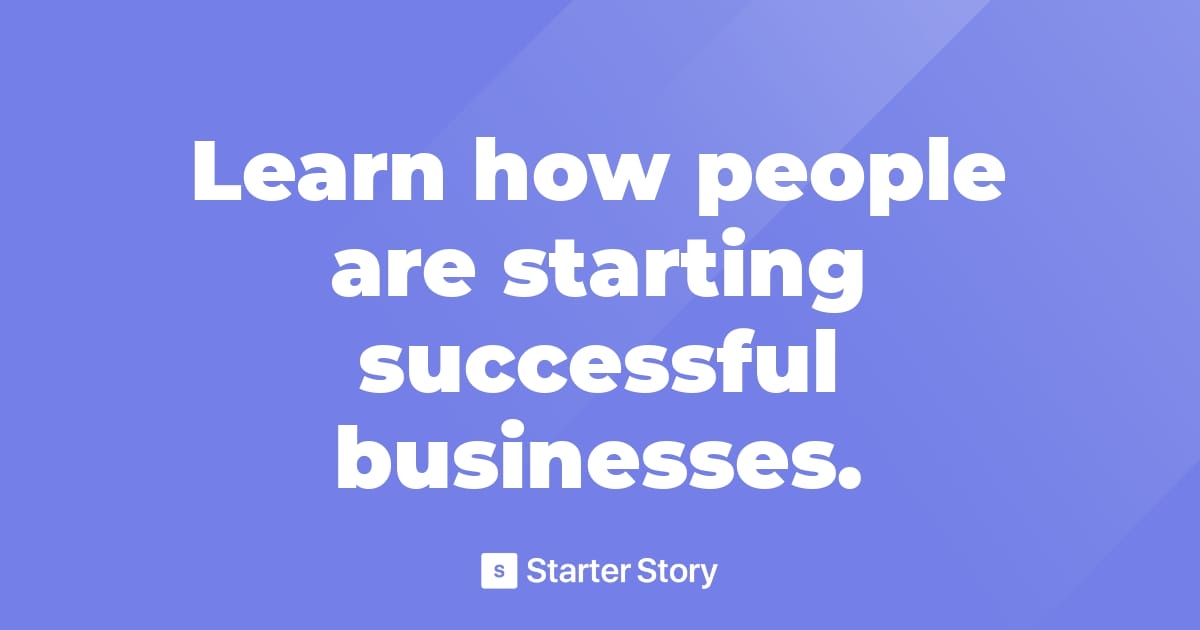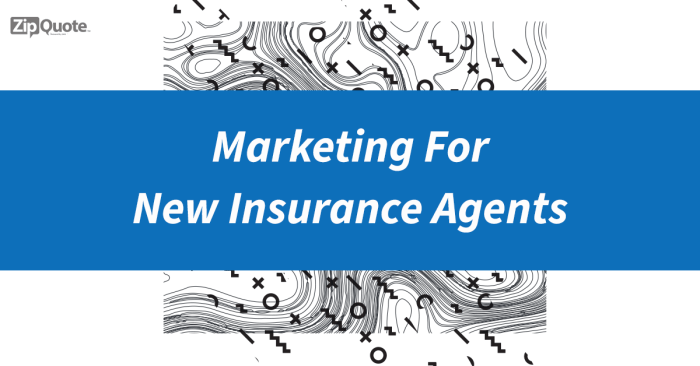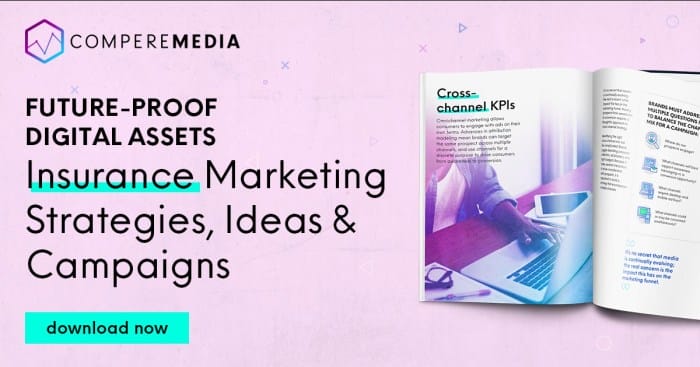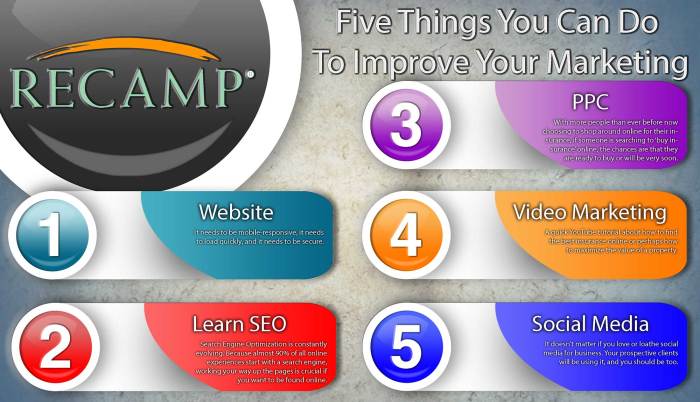In the fiercely competitive insurance industry, standing out and attracting customers requires a well-crafted marketing strategy. This comprehensive guide presents 59 innovative insurance marketing ideas, tips, and strategies to help insurance companies effectively reach and engage their target audience, boost brand awareness, and drive growth.
From leveraging digital channels to harnessing the power of social media, content marketing, and video content, this guide explores a wide range of marketing techniques tailored to the unique challenges and opportunities of the insurance industry. Discover how to segment your market, target specific audiences, and create compelling content that resonates with your customers.
Comprehensive List of Marketing Ideas

In today’s competitive insurance market, standing out and attracting clients requires a comprehensive and innovative marketing strategy. This exhaustive list of 59 insurance marketing ideas and concepts provides a roadmap for insurance professionals to effectively reach their target audience, generate leads, and drive sales.
From leveraging social media platforms to implementing referral programs, these strategies offer a diverse range of approaches to engage with potential customers and build a strong brand presence. Dive into this comprehensive guide to discover the most effective marketing techniques and elevate your insurance business to new heights.
Social Media Marketing
Harness the power of social media platforms to connect with your target audience, share valuable content, and drive traffic to your website.
- Create engaging social media content: Share informative articles, industry insights, client testimonials, and interactive polls to capture attention.
- Run targeted social media ads: Use platform-specific advertising tools to reach specific demographics, interests, and behaviors.
- Engage with followers: Respond to comments, answer questions, and run contests to foster a sense of community.
- Leverage social media influencers: Partner with industry experts or local influencers to promote your insurance products or services.
Segmentation and Targeting

Segmenting the insurance market and identifying specific target audiences is a crucial strategy for effective marketing campaigns. Understanding customer demographics, needs, and preferences enables insurers to tailor their messaging, products, and distribution channels to resonate with each segment.
By segmenting the market, insurers can:
- Identify unique customer needs: Understanding the specific needs and preferences of different customer segments allows insurers to develop products and services that cater to those needs, increasing customer satisfaction and loyalty.
- Tailor marketing messages: By segmenting the market, insurers can create targeted marketing messages that speak directly to the interests and concerns of each segment, increasing the effectiveness of their marketing efforts.
- Optimize distribution channels: Identifying the preferred distribution channels of each customer segment helps insurers reach their target audience more efficiently. For example, tech-savvy customers may prefer online platforms, while traditional customers may prefer face-to-face interactions.
- Personalize customer experiences: Segmentation enables insurers to provide personalized customer experiences by understanding individual customer preferences and tailoring interactions accordingly. This can lead to increased customer engagement and satisfaction.
Customer Segmentation Strategies
There are several strategies for segmenting the insurance market. Some common segmentation variables include:
- Demographics: Age, gender, income, education, and location.
- Psychographics: Values, attitudes, interests, and lifestyle.
- Behavioral: Purchase history, claims history, and risk tolerance.
- Needs and preferences: Specific insurance needs, coverage preferences, and service expectations.
Insurers can use a combination of these variables to create customer segments that are meaningful and actionable. By understanding the unique characteristics and needs of each segment, insurers can develop targeted marketing campaigns that are more likely to resonate with their target audience.
Digital Marketing Strategies

In today’s digital age, it is essential for insurance companies to leverage digital channels to effectively reach and engage with their target audience. Digital marketing offers a wide range of opportunities to connect with potential customers, build brand awareness, and drive sales.
There are numerous effective digital marketing tactics that insurance companies can utilize to achieve their marketing goals. Some of the most commonly used and successful tactics include social media engagement, search engine optimization (), and pay-per-click (PPC) advertising.
Social Media Engagement
Social media platforms provide a powerful tool for insurance companies to connect with potential customers and build relationships with existing policyholders. By creating engaging and informative content, responding to customer inquiries and comments, and running social media contests and giveaways, insurance companies can increase brand awareness, generate leads, and drive sales.
Search Engine Optimization ()
is the process of optimizing a website to improve its ranking in search engine results pages (SERPs). By optimizing their websites for relevant s and phrases, insurance companies can increase the visibility of their website and attract more organic traffic.
This can lead to increased brand awareness, lead generation, and sales.
Pay-Per-Click (PPC) Advertising
PPC advertising is a form of online advertising in which advertisers pay a publisher (usually a search engine or website) each time an ad is clicked. PPC advertising can be an effective way to reach potential customers who are actively searching for insurance products or services.
By targeting specific s and phrases, insurance companies can ensure that their ads are seen by people who are most likely to be interested in what they have to offer.
Content Marketing
Content marketing is a powerful strategy for attracting and retaining customers by creating and distributing valuable, relevant, and consistent content. It helps establish your insurance agency as a thought leader in the industry, build trust with potential customers, and drive traffic to your website.
To create engaging content, focus on formats that resonate with your target audience. Blog posts, infographics, videos, and e-books are all effective ways to share your expertise and provide valuable information to your customers.
Types of Content Formats
- Blog Posts: Share your insights on insurance-related topics, such as choosing the right policy, understanding coverage options, and managing claims.
- Infographics: Use visuals to present complex insurance concepts in a simple and easy-to-understand manner.
- Videos: Create educational or entertaining videos that capture your audience’s attention and keep them engaged.
- E-books: Offer comprehensive guides or in-depth analysis of specific insurance topics that your audience can download and read at their convenience.
Tips for Creating Engaging Content
- Know Your Audience: Understand their needs, interests, and pain points to create content that resonates with them.
- Provide Value: Offer practical advice, actionable tips, and insights that help your audience make informed decisions about their insurance coverage.
- Be Consistent: Create a regular schedule for publishing new content to keep your audience engaged and coming back for more.
- Promote Your Content: Share your content on social media, email newsletters, and other online channels to reach a wider audience.
Measuring the Success of Your Content Marketing
To determine the effectiveness of your content marketing efforts, track key metrics such as website traffic, social media engagement, lead generation, and conversion rates. Use this data to refine your content strategy and improve your results over time.
Social Media Marketing

In the modern digital landscape, social media platforms have emerged as a powerful tool for insurance marketing, offering a unique opportunity to connect with potential customers, build relationships, and drive conversions. With a vast and diverse user base, social media platforms enable insurance companies to target specific demographics, deliver personalized content, and engage in meaningful conversations with their audience.Creating
a strong social media presence is the cornerstone of effective social media marketing. This involves establishing profiles on relevant platforms, optimizing them with accurate and compelling information, and consistently posting high-quality content. Regular engagement with customers through comments, replies, and direct messages demonstrates responsiveness and fosters a sense of community.Social
media advertising is a targeted and cost-effective way to reach a wider audience and promote insurance products or services. By utilizing platform-specific advertising features, insurance companies can precisely target their ideal customer segments based on demographics, interests, and online behavior.
Additionally, social media advertising allows for the creation of visually appealing ads that can captivate attention and drive conversions.
Email Marketing
Email marketing is a potent tool for insurance companies to reach and nurture prospects and customers. It enables personalized communication, drives engagement, and promotes products and services effectively.
Building an email list is the foundation of successful email marketing. Offer incentives, such as exclusive content or discounts, to encourage website visitors to subscribe. Employ lead magnets like e-books or webinars to capture email addresses. Leverage social media platforms, online forms, and offline events to expand your subscriber base.
Crafting Effective Email Campaigns
Personalize email campaigns by addressing recipients by name and tailoring content based on their interests and behaviors. Keep subject lines concise and compelling to increase open rates. Craft clear and concise email copy that highlights the benefits of your products or services.
Use a consistent brand voice and design to create a recognizable and trustworthy experience.
Measuring Email Marketing Success
Tracking key metrics is crucial to assess the effectiveness of email marketing campaigns. Monitor open rates, click-through rates, conversion rates, and unsubscribes to gauge engagement and identify areas for improvement. Conduct A/B testing to optimize subject lines, email content, and call-to-actions.
Analyze customer behavior and feedback to refine your email marketing strategy.
Video Marketing

The impact of video content in insurance marketing has grown exponentially in recent years. Video offers a dynamic and engaging medium to communicate complex insurance concepts, build trust, and connect with audiences on a personal level.
To create compelling video content that resonates with insurance audiences, consider the following tips:
Compelling Storytelling
Craft videos that tell compelling stories that resonate with your target audience. Showcase real-life scenarios, customer testimonials, and inspiring narratives that highlight the value and benefits of your insurance products or services.
Visual Appeal
Utilize visually appealing elements to capture attention and keep viewers engaged. Incorporate high-quality visuals, animations, graphics, and captivating visuals to create a memorable and immersive experience.
Keep it Concise
Create videos that are concise and to the point. Keep your message clear and focused, avoiding unnecessary details or lengthy explanations. Aim for videos that are under two minutes in length to maintain viewer attention.
Choose the Right Platform
Select the right video platforms to distribute your content. Consider platforms like YouTube, Vimeo, and social media channels that align with your target audience’s preferences and online behavior.
Optimize for Search
Optimize your videos for search engines and video platforms by incorporating relevant s in titles, descriptions, and tags. This will improve visibility and increase the chances of your videos being discovered by potential customers.
Interactive Elements
Incorporate interactive elements like clickable annotations, polls, and quizzes to enhance viewer engagement and encourage interaction. This can help keep viewers engaged and make your videos more memorable.
Call to Action
Include a clear call to action at the end of your videos to encourage viewers to take the next step. This could be visiting your website, requesting a quote, or contacting your insurance agency for more information.
Public Relations and Media Relations

Public relations and media relations play a pivotal role in shaping brand awareness, reputation, and trust for insurance companies. By fostering positive relationships with the media and key stakeholders, insurance companies can effectively communicate their value proposition, address customer concerns, and generate favorable publicity.
Strategies for Developing Effective Media Outreach Campaigns
Establish Clear Objectives
Define specific, measurable, achievable, relevant, and time-bound (SMART) objectives for your media outreach efforts. Identify key messages and target audiences to ensure a focused and impactful campaign.
Research and Target Relevant Media Outlets
Conduct thorough research to identify media outlets, journalists, and influencers who cover the insurance industry or relevant topics. Tailor your outreach strategy to resonate with each outlet’s audience and editorial preferences.
Craft Compelling Press Releases
Develop newsworthy and well-written press releases that highlight company milestones, product launches, industry insights, or thought leadership pieces. Ensure clarity, accuracy, and adherence to journalistic standards.
Personalize and Build Relationships
Foster personal connections with journalists and influencers by engaging with them on social media, attending industry events, and providing exclusive access to company news and executives. Building rapport can lead to more favorable coverage.
Monitor and Measure Results
Continuously track the performance of your media outreach efforts, including media mentions, website traffic, and social media engagement. Adjust your strategy as needed to optimize results and maximize impact.
Customer Experience and Relationship Building
In the insurance industry, customer loyalty and retention are key drivers of success. Delivering exceptional customer experiences is crucial for building strong relationships with policyholders, increasing customer satisfaction, and driving positive word-of-mouth referrals.
Here are some tips for insurance companies to enhance customer experience and build strong relationships:
Personalize the Customer Experience
Personalizing the customer experience can make a significant difference in building strong relationships. This involves understanding each customer’s unique needs, preferences, and circumstances, and tailoring products, services, and communication accordingly. Personalization can be achieved through data analysis, customer feedback, and ongoing engagement.
- Collect customer data and analyze it to gain insights into their preferences, behaviors, and needs.
- Use customer feedback to identify areas for improvement and make changes that enhance the customer experience.
- Personalize communication by addressing customers by name, using relevant information, and providing tailored recommendations.
Respond Quickly and Effectively to Inquiries and Complaints
When customers have inquiries or complaints, responding quickly and effectively is crucial for maintaining their satisfaction and trust. This involves establishing clear channels for communication, such as phone lines, email, and online chat, and ensuring that customer service representatives are knowledgeable, empathetic, and empowered to resolve issues promptly.
- Establish clear channels for communication, such as phone lines, email, and online chat, and make sure they are easily accessible to customers.
- Ensure that customer service representatives are knowledgeable, empathetic, and empowered to resolve issues promptly.
- Provide customers with regular updates on the status of their inquiries or complaints and keep them informed throughout the resolution process.
Exceed Customer Expectations
Going above and beyond to exceed customer expectations can create a lasting positive impression and drive loyalty. This can be achieved by providing exceptional service, offering personalized recommendations, and demonstrating a genuine interest in helping customers. Exceeding expectations can also involve taking proactive steps to identify and address potential issues before they arise.
- Provide exceptional service by going above and beyond to meet customer needs.
- Offer personalized recommendations based on customer data and insights.
- Demonstrate a genuine interest in helping customers by listening to their concerns and addressing them promptly.
Data Analytics and Market Research

Insurance companies face the challenge of understanding customer behavior and market trends to make informed marketing decisions. Data analytics and market research are valuable tools in addressing these challenges.
Data analytics enables insurance companies to gather, analyze, and interpret data from various sources, including customer interactions, claims history, and market trends. This data provides insights into customer preferences, risk profiles, and emerging trends, enabling insurers to tailor marketing campaigns and improve customer engagement.
Customer Segmentation and Targeting
Data analytics allows insurance companies to segment customers based on demographics, psychographics, and behavioral patterns. This segmentation helps insurers target specific customer groups with personalized marketing messages and products that resonate with their needs and preferences.
Product Development and Innovation
Data analytics provides valuable insights into customer needs and preferences, enabling insurance companies to develop and innovate products that meet the evolving demands of the market. By analyzing customer feedback, claims data, and market trends, insurers can identify gaps in the market and develop products that address those needs.
Risk Assessment and Pricing
Data analytics plays a crucial role in risk assessment and pricing for insurance companies. By analyzing historical claims data, insurers can identify factors that contribute to risk and accurately price their products. This data-driven approach helps ensure that premiums are fair and competitive while maintaining profitability.
Fraud Detection and Prevention
Data analytics is a powerful tool in detecting and preventing insurance fraud. By analyzing large volumes of data, insurers can identify suspicious patterns and behaviors that may indicate fraudulent claims or activities. This enables them to take proactive measures to mitigate fraud and protect their financial interests.
Final Summary

By implementing these 59 insurance marketing ideas, insurance companies can elevate their marketing efforts, differentiate themselves from competitors, and achieve sustainable growth. With a focus on delivering exceptional customer experiences, leveraging data analytics, and building strong relationships, insurance companies can position themselves as trusted partners, providing valuable solutions and peace of mind to their customers.
FAQ Summary
Question: What is the significance of segmentation and targeting in insurance marketing?
Answer: Segmentation and targeting allow insurance companies to tailor their marketing efforts to specific customer groups, addressing their unique needs, preferences, and demographics. This targeted approach enhances marketing effectiveness and improves the customer experience.
Question: How can insurance companies leverage digital channels for effective marketing?
Answer: Digital channels, including social media, search engines, and email, provide a powerful platform for insurance companies to reach and engage their target audience. By creating a strong online presence, implementing strategies, and utilizing social media advertising, insurance companies can increase brand visibility, generate leads, and drive conversions.
Question: What is the role of content marketing in insurance marketing?
Answer: Content marketing is a valuable tool for insurance companies to establish themselves as thought leaders and build trust with potential customers. By creating and distributing valuable, relevant, and consistent content, insurance companies can attract and retain customers, nurture leads, and drive brand awareness.



